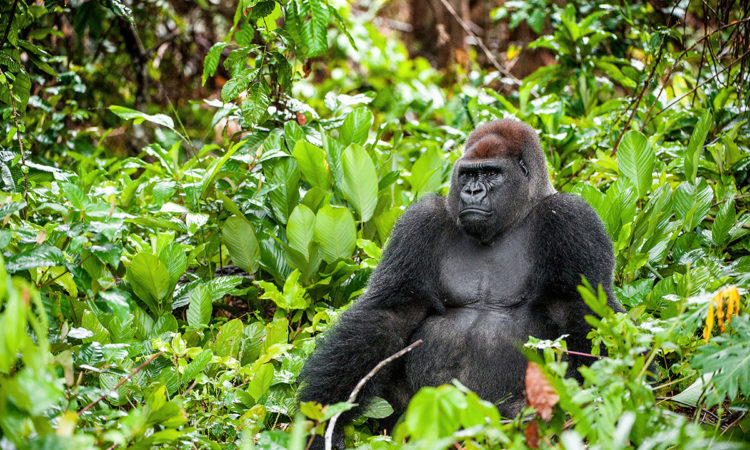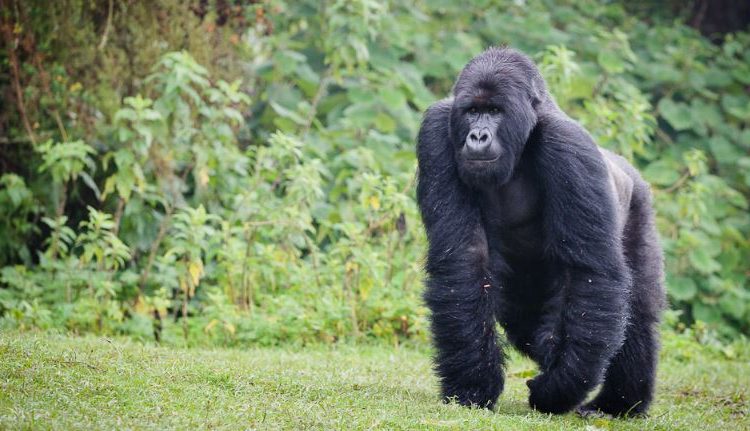
Gorilla habitat
Gorilla habitat – Where do gorillas live?
Gorilla habitat : Gorillas are almost the closest relatives to the humans just after the chimpanzees and the bonobos. These primates are commonly found in the tropical rain forests of the equatorial Africa. The gorilla is a genus of primates and these are classified into two species with four sub species and these species are the western gorillas and the eastern gorillas. The western gorillas are further divided into two sub species which are the western lowland gorillas and the cross-river gorilla.
The other specie of the gorilla is the eastern gorilla and this is further divided into the eastern lowland and the mountain gorillas. The western lowland gorilla (G. gorilla gorilla) commonly staying in the lowland rain forests running from the Congo River up to Cameroon while the cross-river gorillas usually found in a small forest located along the river which acts as a boundary between Nigeria and Cameroon.
The eastern lowland gorilla sub species are commonly known as the Grauer’s gorilla (G. beringei graueri) and these eastern lowland gorillas are commonly found in the lowland rain forests of the eastern Democratic Republic of Congo former Zaire. The mountain gorilla is another sub species of the eastern gorilla and these are commonly found in the montane rain forests and the bamboo forests of the Albertine rift. The mountain gorillas are a common sighting in the north of Lake Kivu and around the intersection of Uganda, Rwanda and the DR Congo.
The gorilla as a genus is a very strong animal and it has thick body hair, broad chest and strong well-built arms and legs. The skin just like the fur of the gorillas is black and the fur is spread out all over their body minus the face, palms and under the feet. The male gorillas weigh twice as much as the female gorillas and this is an estimated weight of 135 to 200 kgs approximately 300 to 485 pounds for the male gorillas and a height ranging from about 1.7 meters which is approximately 5 feet and 5 inches.

The eastern lowland gorillas tend to have longer hair than the other gorilla sub species and as the males age, the black hair on their lower back up to the hips for some tends to start greying thus the name silverback. The western gorillas as they age usually tend to brown instead of grey, their foreheads and the hair on their lower back turns to a deep brownish gray, Gorilla habitat.
Despite living in the wild, the gorillas live in a social setting of families and on a gorilla trek, you are chanced to visit one gorilla family and these can be having from 4 members up to 30 individuals and they are led by one dominant male gorilla known as the dominant silverback.
The western gorillas have been seen to live and thrive even when in captivity and these are the gorillas you will often find in zoos. The oldest gorilla while in captivity died at the age of 70 from old age but the mountain gorillas prefer the mountainous and forested lands so these specific gorillas cannot survive in captivity.
The mountain gorillas are living and can be visited in only two places in the entire world and this is in the Virunga ranges and the Bwindi Impenetrable Forest. There are four national parks that you can visit for the mountain gorilla trekking and these are the Volcanoes national park of Rwanda, the Virunga national park of the Democratic republic of Congo, the Mgahinga gorilla national park and the Bwindi Impenetrable Forest national park of Uganda.
Their habitats favor their feeding habits as they are omnivores and feed on plant parts such as the roots, barks, shoots, leaves, swampy vegetation and small insects at times. They also spend their nights in nests which they build on a daily and these nests are built on ground as compared to the chimpanzees that rest on the top of the trees and this majorly because the gorillas are heavy and the trees may not support their weight.


